For many people the beginning of spring represents a reason to start eating healthier. One of the well-known options is to start consuming Whole Wheat and/or Whole Grain products, in replacement for the more traditional white bread, rice and pasta. We asked our large community of mobile users to tell us more about their shopping and consuming behavior regarding Whole Wheat and Whole Grain products. Read all the interesting findings in our latest Consumer Report
1. EUROPEANS LOVE WHOLE WHEAT!
85% of Europeans consume whole wheat products. 45% of shoppers state to eat more whole wheat products at the beginning of the year and during spring. 28% of them does so in the attempt to lose weight and eat healthier.
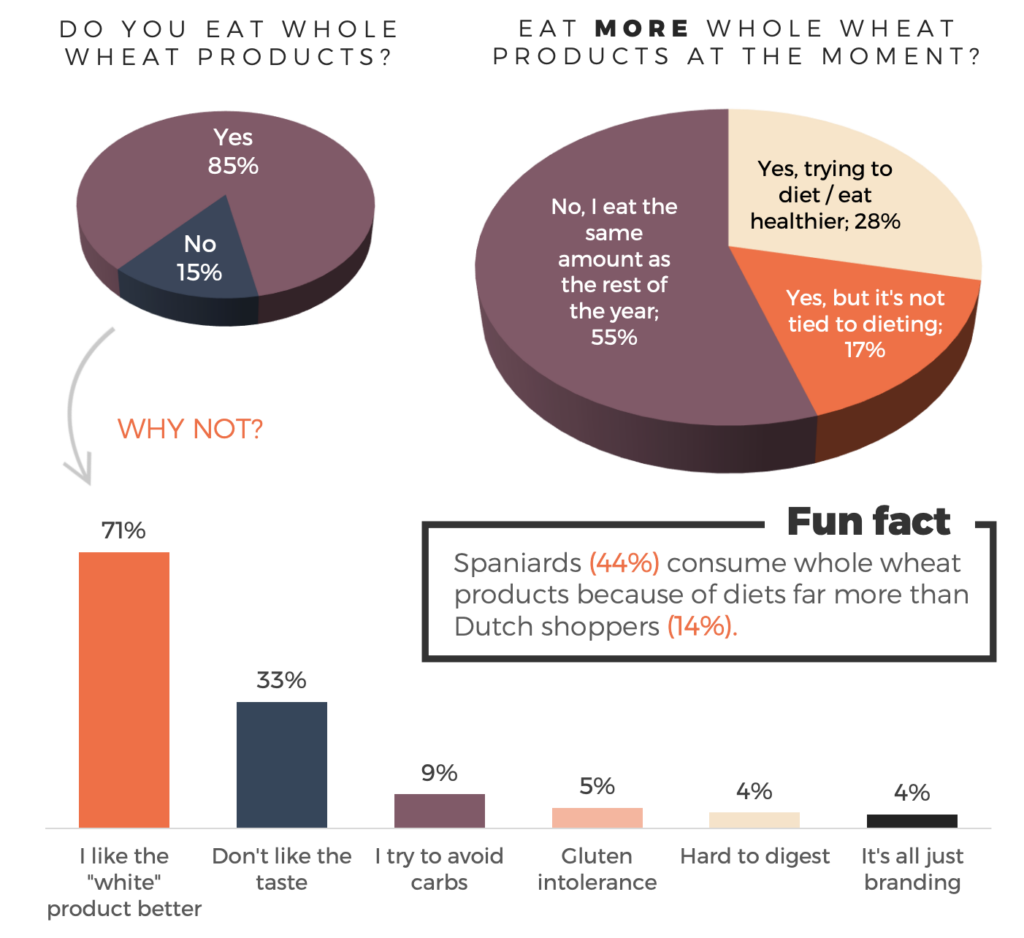
Whole wheat bread, the most popular type of whole wheat product
Fun fact
When it comes to eating whole wheat products, habits seem to differ per country.
• Dutch shoppers register a higher preference for whole wheat crackers (62%).
• Brits consume more whole wheat wraps or tortillas (55%).
• Italians prefer whole wheat cookies (65%) more than other countries.
With 88% of preferences, bread tops the charts of the preferred whole wheat products, followed by pasta (64%) and rice and cereals (both 47%).
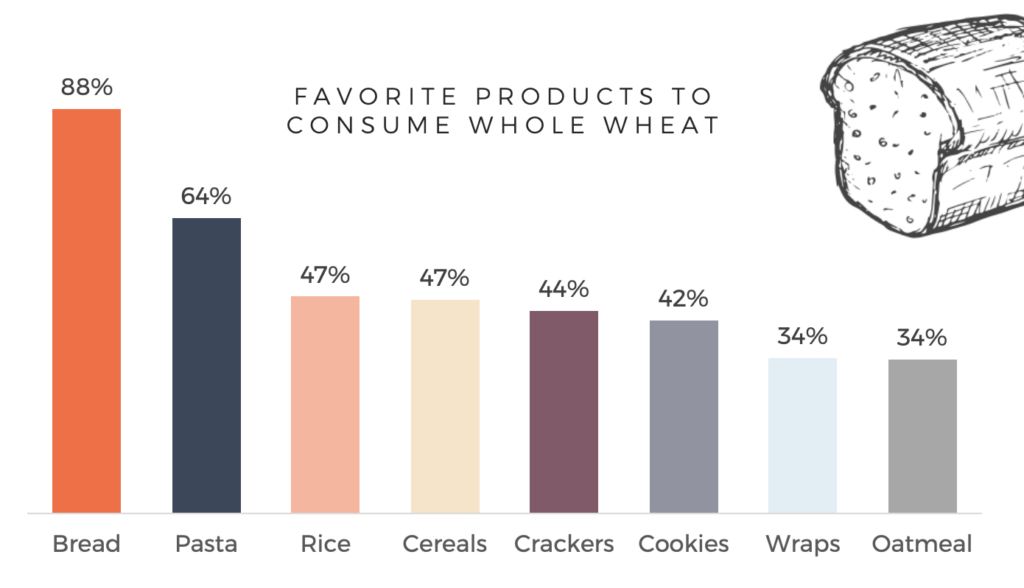
High amounts of fiber: the biggest motivator for eating whole wheat
When ?
Most Europeans (83%) eat whole wheat products during breakfast. Lunch follows right after with 71% of preferences, while dinner comes in last with 56%.
72% of Europeans choose whole wheat products because of its high fiber content. Nutrient-richness (52%) and good taste (43%) are also amongst the most popular reasons.
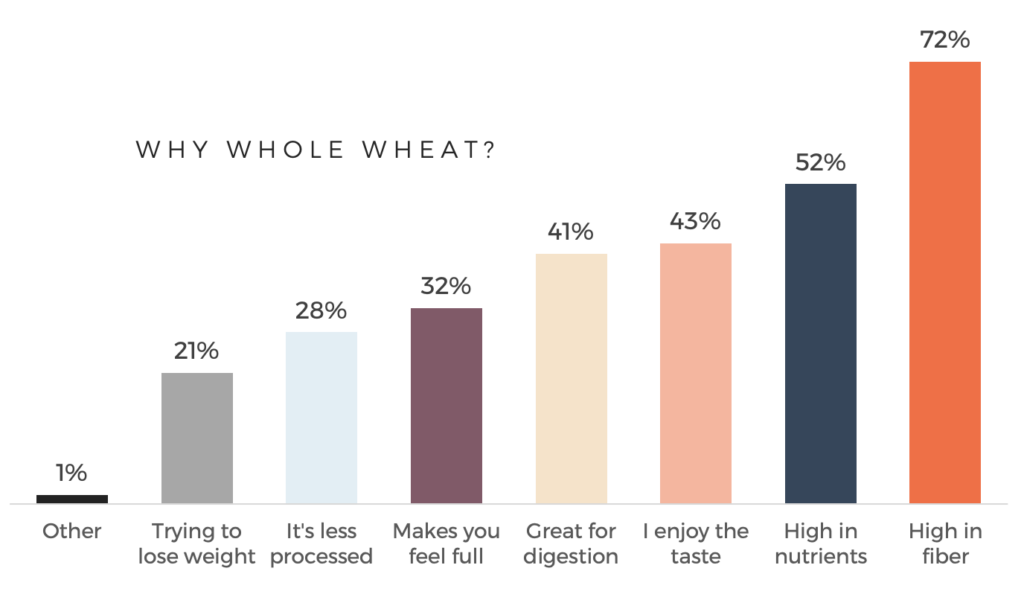
2. HIGHER PRICE JUSTIFIED FOR WHOLE WHEAT PRODUCTS
65% of Europeans say to be wiling to pay more for a whole wheat product. 13% state to buy whole wheat products from premium brands only, whilst 22% prefers supermarket brands. The most popular channel to shop at is, by far, the regular supermarket (85%).
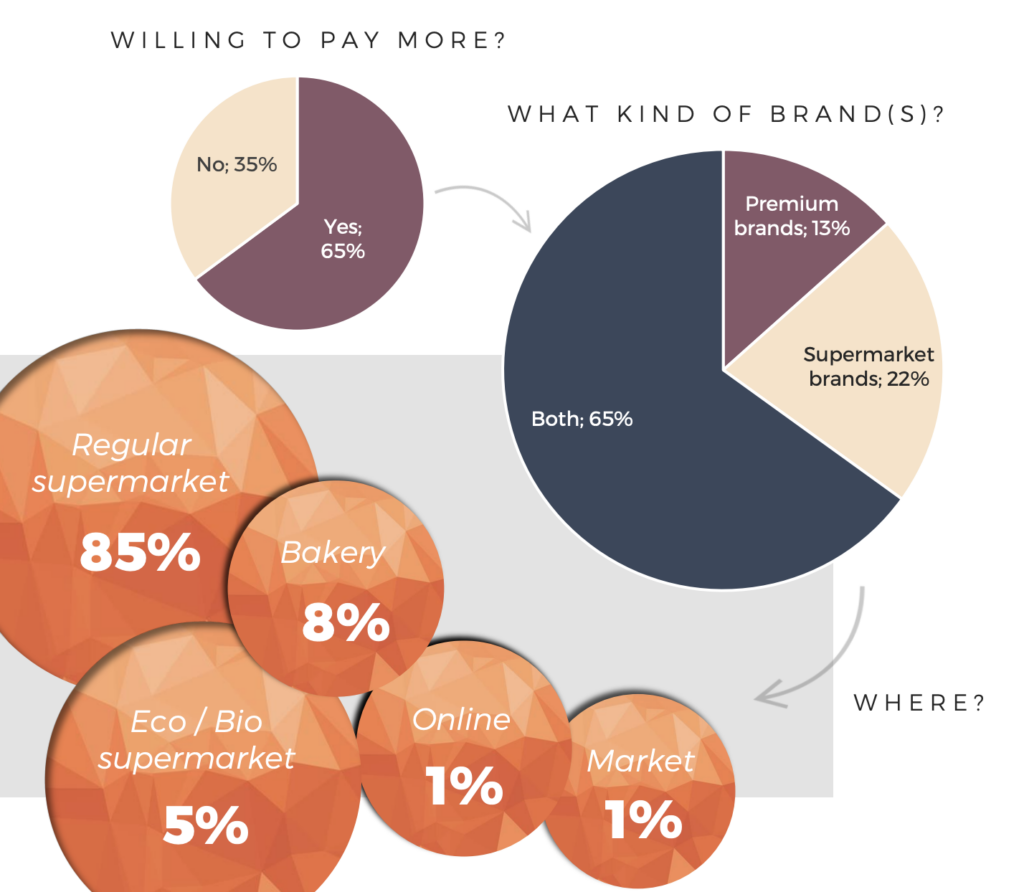
3. WHOLE WHEAT PURCHASING PREFERENCES OF EUROPEANS
When purchasing whole wheat products, the two most important decision factors are “a good balance between quality and price” (61%) and “quality and nutrients” (49%).
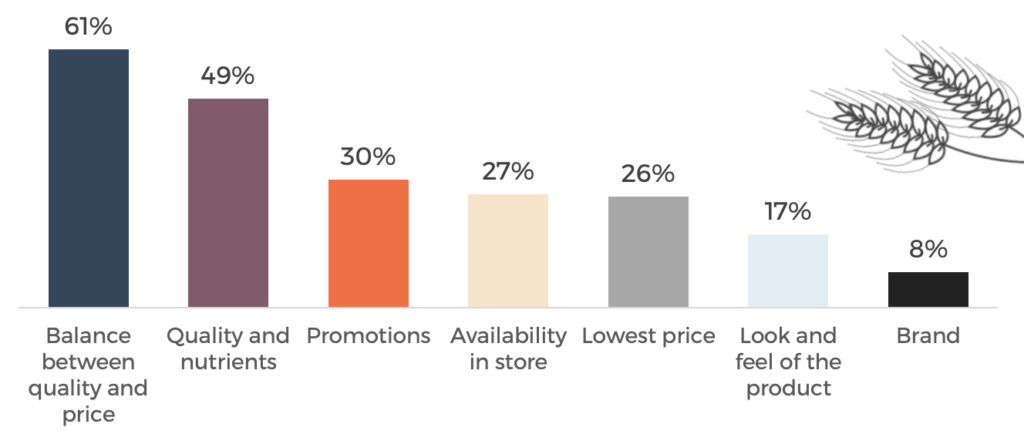
When their favorite whole wheat product is out-of-stock, most Europeans replace it with a different brand (59%).
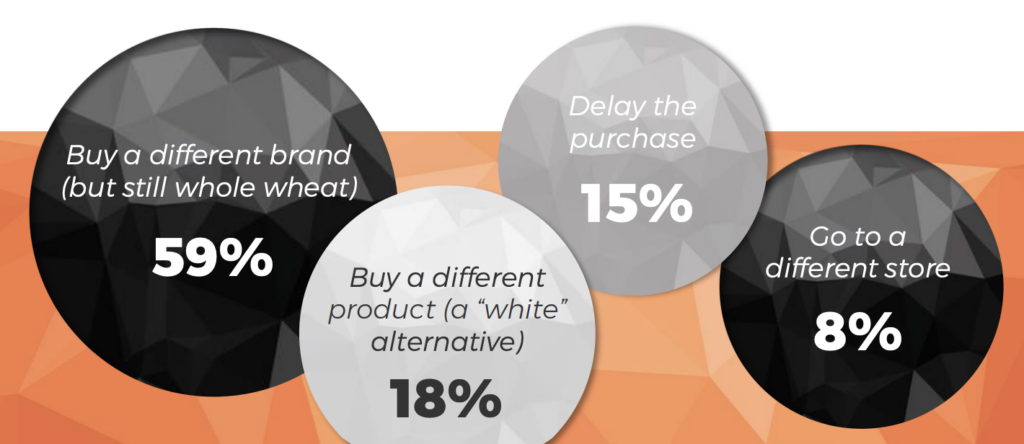
4. WHAT ABOUT THE KIDS?
Most parents (84%) feed their kids whole wheat products. Bread remains the most popular choice, while products like cereals and cookies register less preferences.
Fun fact
Compared to the “adult figures“ on page 4, it seems that parents feed their kids less whole wheat products. For instance: 88% of adults eat whole wheat bread, while 74% of kids do. 64% of adults eat whole wheat pasta, while 50% of kids do.
The findings presented in this report are based on the results of an investigative task submitted to the Roamler Crowd during the month of January 2021. The purpose was to determine the crowd’s practices when it comes to purchasing whole wheat products. The findings take into account data collected from 5.414 respondents, located in Italy, France, Spain, the UK, Germany, Belgium and the Netherlands.